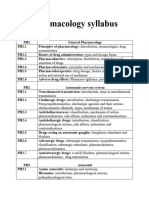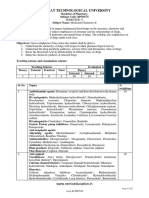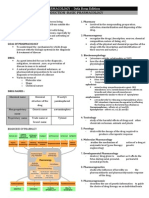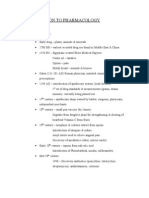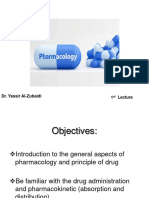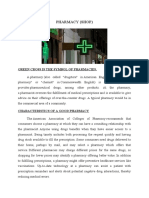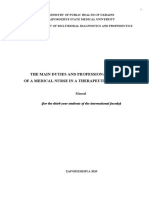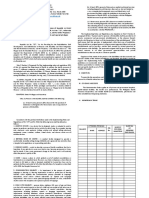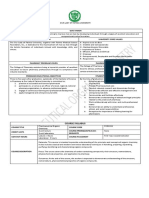0% found this document useful (0 votes)
166 views45 pagesLecture 1 - Introduction & Routes of Administration
This document provides information about the Pharmacology I course offered at PL 309. It outlines the course lecturers, teacher assistants, recommended textbooks, prerequisites, aim, intended learning outcomes, and assessment. The course covers general pharmacology principles including pharmacokinetics, pharmacodynamics, routes of drug administration, the autonomic nervous system, and autacoids. Assessment includes exams, practical exams, interactive learning, and assignments. The overall goal is to teach basic pharmacology concepts essential for pharmacy students.
Uploaded by
ahmadslayman1Copyright
© © All Rights Reserved
We take content rights seriously. If you suspect this is your content, claim it here.
Available Formats
Download as PDF, TXT or read online on Scribd
0% found this document useful (0 votes)
166 views45 pagesLecture 1 - Introduction & Routes of Administration
This document provides information about the Pharmacology I course offered at PL 309. It outlines the course lecturers, teacher assistants, recommended textbooks, prerequisites, aim, intended learning outcomes, and assessment. The course covers general pharmacology principles including pharmacokinetics, pharmacodynamics, routes of drug administration, the autonomic nervous system, and autacoids. Assessment includes exams, practical exams, interactive learning, and assignments. The overall goal is to teach basic pharmacology concepts essential for pharmacy students.
Uploaded by
ahmadslayman1Copyright
© © All Rights Reserved
We take content rights seriously. If you suspect this is your content, claim it here.
Available Formats
Download as PDF, TXT or read online on Scribd
/ 45















